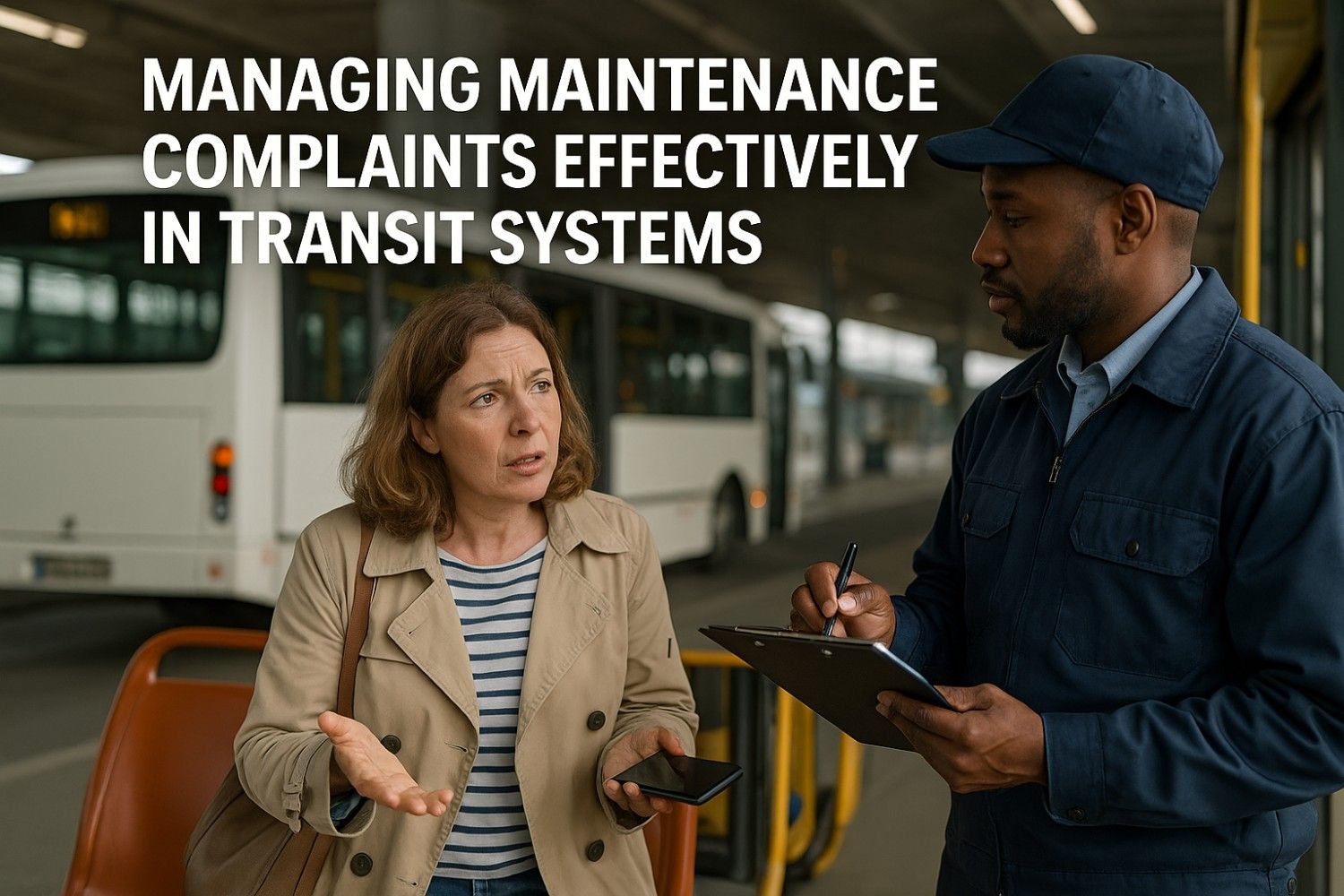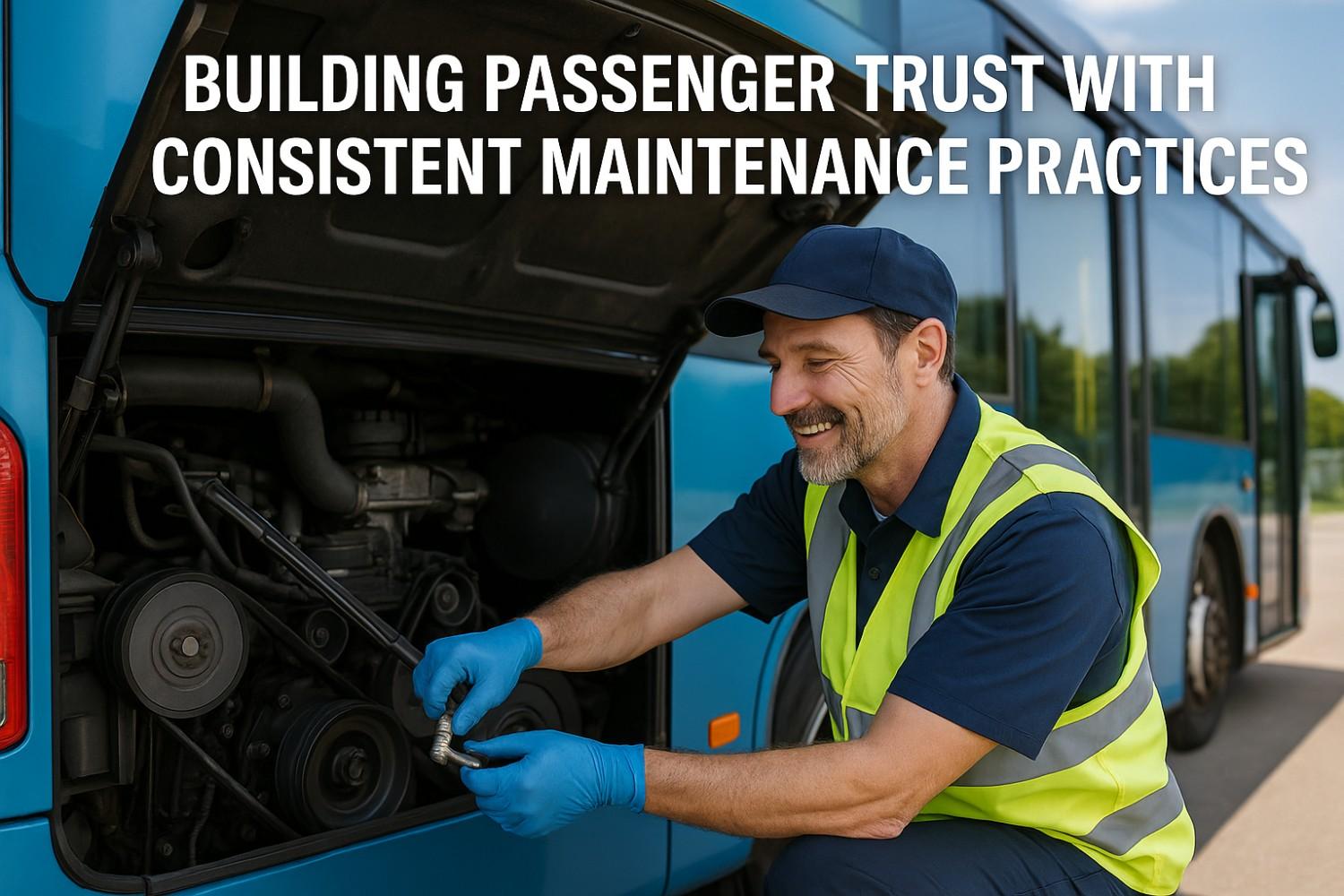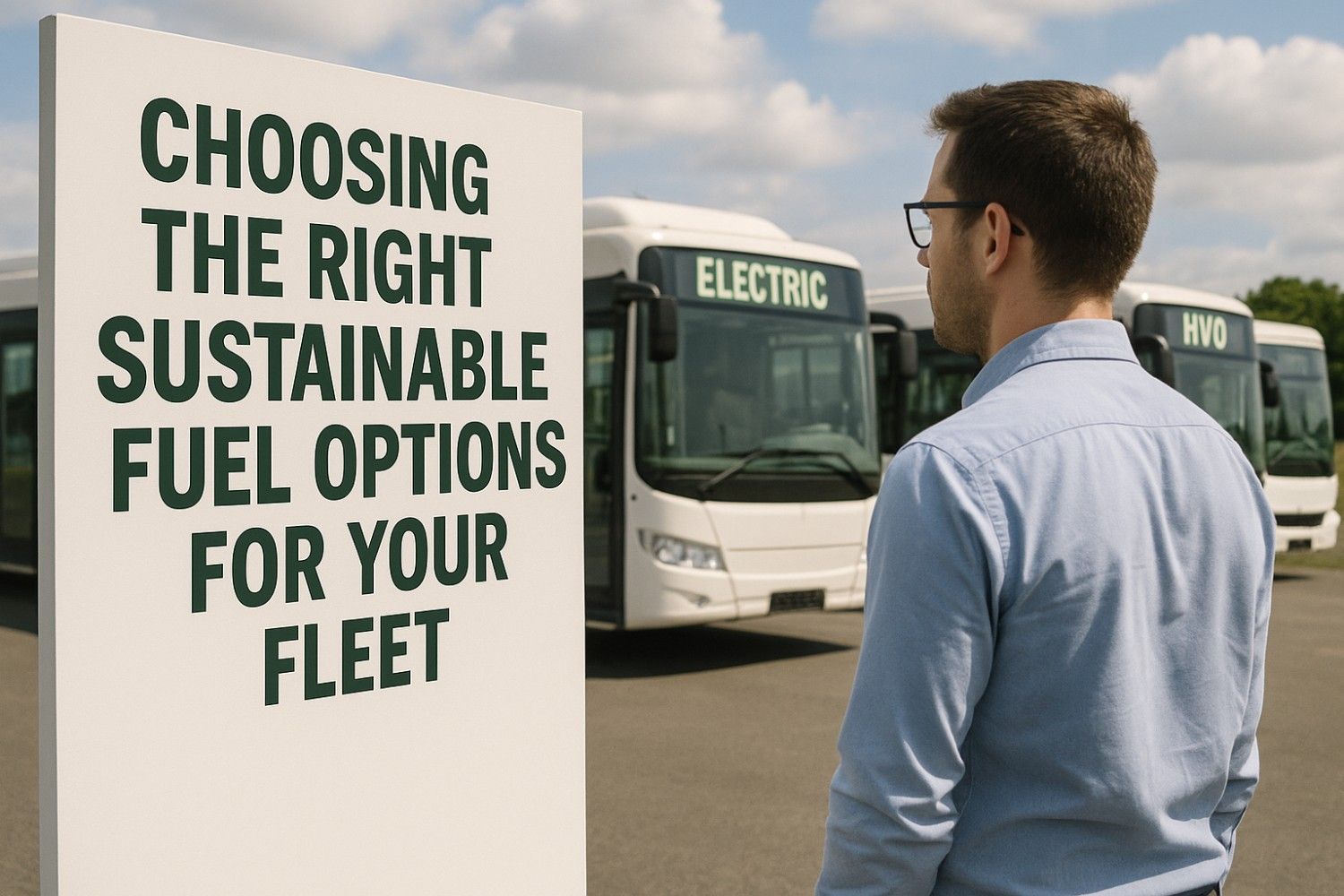Maintenance-related passenger complaints represent critical feedback revealing operational weaknesses while providing opportunities to demonstrate organizational responsiveness and commitment to service excellence. Every complaint about uncomfortable temperatures, rough rides, malfunctioning doors, or delayed departures due to mechanical issues signals gaps between passenger expectations and delivered service quality. How transit agencies respond to these complaints determines whether frustrated passengers become loyal advocates or permanent detractors sharing negative experiences throughout their communities.
Traditional complaint management approaches treat maintenance feedback as isolated incidents requiring individual responses rather than recognizing patterns indicating systemic issues. This reactive stance results in repeated complaints about identical problems across multiple vehicles, eroding passenger trust while wasting resources addressing symptoms instead of root causes. Passengers increasingly expect organizations to learn from feedback, implement improvements, and communicate changes demonstrating that complaints drive meaningful action rather than disappearing into bureaucratic black holes.
Progressive transit agencies implementing systematic complaint management strategies report transformative improvements: 72% reduction in repeat maintenance complaints, 85% passenger satisfaction with complaint resolution processes, 91% first-contact resolution rates, and measurable service quality improvements directly attributable to complaint-driven insights. These results demonstrate that strategic complaint management transforms negative experiences into continuous improvement opportunities, proving that responsive organizations convert critics into champions through authentic problem-solving and transparent communication.
Transform Complaints Into Service Excellence Opportunities
Modern fleet management platforms connect complaint data directly to maintenance operations, enabling systematic issue resolution and continuous quality improvements.
Getting Started Book a DemoUnderstanding the Complaint Management Ecosystem
Effective complaint management requires comprehensive systems connecting passenger feedback channels directly to maintenance operations, quality assurance processes, and communication teams. This integrated approach ensures complaints receive prompt attention while generating actionable intelligence for continuous service improvement and organizational learning.
Complaint Classification Framework
Systematic complaint categorization enables pattern recognition and appropriate response routing. Climate control complaints receive different handling than safety-related concerns about brakes or steering. Severity classifications determine urgency levels, with safety issues triggering immediate vehicle inspection while comfort concerns follow standard priority protocols. Comprehensive categorization systems track complaint types, affected vehicle identification, route correlations, and temporal patterns revealing whether issues concentrate during specific times, weather conditions, or operational circumstances.
Advanced analytics identify complaint trends before they escalate into widespread passenger dissatisfaction. When multiple riders report similar issues on particular routes or vehicles, automated systems flag potential systemic problems requiring immediate investigation rather than treating each complaint as isolated incident. This proactive pattern recognition prevents minor maintenance issues from deteriorating into major failures causing service disruptions.
Multi-Channel Complaint Reception
- Mobile Application Reporting: In-app complaint submission with automatic vehicle and location identification
- Customer Service Hotlines: Phone-based reporting with structured intake procedures ensuring complete information capture
- Website Contact Forms: Detailed complaint submission portals allowing comprehensive issue description
- Social Media Monitoring: Active tracking of passenger feedback across Twitter, Facebook, and other platforms
- On-Vehicle Reporting: QR codes enabling real-time issue reporting during journeys
- Station Personnel Reports: Staff observations supplementing direct passenger complaints
Immediate Response Protocols for Safety-Critical Complaints
Priority Response Requirements
- Brake System Concerns: Immediate vehicle removal from service pending comprehensive inspection
- Steering and Handling Issues: Emergency assessment by certified mechanics within 30 minutes
- Door Malfunction Reports: Immediate evaluation ensuring passenger safety during boarding and alighting
- Smoke or Unusual Odors: Instant vehicle quarantine with fire safety inspection protocols
Safety-related complaints demand immediate action regardless of other operational pressures. When passengers report concerns about brakes, steering, doors, or any systems affecting safety, protocols require immediate vehicle removal from service pending thorough inspection. This unwavering commitment to safety demonstrates organizational values while protecting passengers from potential harm, building trust through visible prioritization of wellbeing over operational convenience.
Rapid response protocols include automatic notification systems alerting maintenance supervisors, operations managers, and safety officers simultaneously when passengers report critical concerns. Mobile maintenance teams reach affected vehicles within minutes, conducting preliminary assessments determining whether buses can safely complete routes or require immediate replacement. This coordinated response minimizes passenger disruption while ensuring no compromises on safety standards.
Connecting Complaints to Maintenance Actions
The most critical aspect of complaint management involves translating passenger feedback into specific maintenance interventions addressing root causes. This connection requires sophisticated systems linking customer service databases with maintenance management platforms ensuring every complaint triggers appropriate technical evaluation and corrective action.
Complaint-to-Work Order Workflows
Automated Work Order Generation
Direct conversion of verified complaints into maintenance tasks with priority assignment
Vehicle Identification Tracking
Linking complaints to specific buses enabling targeted diagnostic procedures
Technician Assignment Protocols
Routing complaint-driven work orders to mechanics with relevant expertise
Integration between complaint systems and maintenance platforms eliminates manual processes prone to delays and information loss. When passengers report air conditioning failures, systems automatically generate climate control inspection work orders assigned to HVAC specialists. Vehicle identification numbers from complaint reports ensure technicians examine the exact buses passengers experienced, rather than randomly checking fleet vehicles hoping to identify issues.
Root Cause Analysis Requirements
Effective complaint resolution extends beyond addressing immediate symptoms to identifying underlying causes preventing recurrence. When passengers complain about rough rides, thorough investigations examine suspension components, tire conditions, shock absorbers, and even road conditions on affected routes. This comprehensive approach solves actual problems rather than applying temporary fixes allowing issues to resurface, generating additional complaints and continued passenger frustration.
Communicating Resolution to Complainants
Closing the feedback loop by informing passengers about actions taken in response to their complaints demonstrates organizational accountability while building trust through transparent follow-through. Passengers who receive detailed resolution communications become advocates, sharing positive experiences about agencies that listen and respond authentically to feedback.
Effective Resolution Communication Elements
- Acknowledgment Speed: Initial responses within 24 hours confirming complaint receipt and importance
- Investigation Updates: Progress reports during extended diagnostic or repair processes
- Detailed Resolution Explanations: Specific descriptions of corrective actions taken addressing reported issues
- Preventive Measure Communication: Information about systemic improvements preventing similar future occurrences
- Gratitude Expression: Sincere appreciation for passengers taking time to provide valuable feedback
- Follow-Up Satisfaction Checks: Surveys confirming passengers find resolutions satisfactory
Resolution communications should educate passengers about maintenance complexities while remaining accessible to non-technical audiences. Explaining that HVAC repairs required specialized parts with multi-day lead times provides context justifying resolution timelines, while apologizing for inconvenience acknowledges passenger frustration. This balanced approach demonstrates competence and empathy simultaneously, essential qualities building lasting trust.
Pattern Recognition and Systemic Improvements
Individual complaint resolution provides immediate value, but aggregate complaint analysis delivers strategic insights enabling systemic improvements eliminating entire categories of passenger dissatisfaction. Advanced analytics platforms identify patterns invisible when examining isolated incidents, revealing correlations between maintenance practices vehicle characteristics, operational conditions, and complaint frequencies.
Data-Driven Improvement Strategies
When complaint analysis reveals that specific vehicle models generate disproportionate climate control complaints, agencies investigate whether design limitations, inadequate maintenance procedures, or parts quality issues cause problems. This analytical approach targets investments where they deliver maximum passenger satisfaction improvements rather than spreading resources equally across all maintenance areas regardless of impact on service quality.
Temporal analysis identifies seasonal complaint patterns informing preventive maintenance scheduling. If winter months generate increased heating complaints while summers spike cooling concerns, proactive HVAC system overhauls before temperature extremes prevent predictable passenger dissatisfaction. This anticipatory maintenance demonstrates learning from historical complaint patterns while showing passengers that agencies actively work to prevent problems rather than merely reacting when issues arise.
Fleet-Wide Corrective Actions
Component Upgrade Programs
Replacing problematic parts across entire fleets based on complaint-identified weaknesses
Maintenance Procedure Revisions
Updating inspection and service protocols addressing root causes of recurring complaints
Technician Training Enhancements
Targeted education ensuring mechanics address complaint-revealed skill gaps
Managing Unreasonable or Invalid Complaints
Professional Response Guidelines
- Respectful Engagement: Maintaining courtesy even when complaints lack merit or contain hostility
- Factual Corrections: Providing accurate information when complaints stem from misunderstandings
- Explanation Over Dismissal: Educating passengers about operational realities rather than rejecting concerns
- Empathy for Frustration: Acknowledging passenger feelings even when specific complaints prove unfounded
- Escalation Protocols: Clear processes for complaints requiring management attention or special handling
Not all complaints reflect actual maintenance issues, as passenger expectations sometimes exceed realistic service capabilities or stem from misunderstandings about transit operations. When passengers complain about normal operational sounds, standard wear items within acceptable parameters, or industry-standard practices, responses should educate while validating concerns rather than dismissively rejecting feedback as uninformed.
Some complaints reveal opportunities to improve passenger education rather than maintenance practices. If multiple riders express concerns about sounds that mechanics confirm represent normal vehicle operation, educational content explaining these characteristics prevents future confusion while demonstrating transparency. This proactive approach converts potential friction points into trust-building educational opportunities.
Leveraging Complaints for Quality Assurance
Passenger complaints serve as external quality control mechanisms supplementing internal inspection programs. While professional technicians conduct systematic maintenance evaluations, passengers experience vehicles under real-world operational conditions that shop environment cannot replicate. This complementary feedback strengthens overall quality assurance by identifying issues that might escape detection through standard inspection protocols.
Complaint-Driven Inspection Enhancements
Passenger Experience Testing
Systematic evaluation of complaint-identified concerns during quality control processes
Route-Specific Assessments
Testing vehicles under actual operational conditions passengers experience daily
Comfort Metric Measurement
Quantifying ride quality, climate control, and noise levels against passenger expectations
When passenger complaints reveal that certain routes generate more discomfort due to road conditions, agencies adjust maintenance schedules ensuring vehicles operating those routes receive enhanced suspension attention. This targeted approach acknowledges that identical maintenance standards may produce different passenger experiences depending on operational contexts, requiring customized strategies maximizing satisfaction across diverse service conditions.
Training Staff for Effective Complaint Handling
Customer service representatives, bus operators, and maintenance personnel all participate in complaint management processes, requiring comprehensive training ensuring consistent, professional responses that reflect organizational values while gathering information necessary for effective resolution.
Essential Training Components
- Active Listening Skills: Techniques for fully understanding passenger concerns without defensive reactions
- Empathy Communication: Expressing genuine concern for passenger frustration and inconvenience
- Technical Translation: Converting maintenance terminology into accessible explanations for general audiences
- Information Gathering: Structured questioning obtaining complete details necessary for effective investigation
- De-Escalation Strategies: Managing emotionally charged situations professionally while maintaining dignity
- System Navigation: Proficiency with complaint documentation platforms ensuring accurate, complete reporting
Training emphasizes that complaints represent opportunities rather than attacks, helping staff view negative feedback as valuable intelligence for continuous improvement. When employees understand that management supports professional complaint handling and uses feedback constructively rather than punitively, they engage more authentically with passenger concerns, improving both resolution effectiveness and workplace satisfaction.
Measuring Complaint Management Effectiveness
Systematic measurement ensures complaint management processes deliver intended outcomes while identifying improvement opportunities. Comprehensive metrics track both operational efficiency and passenger satisfaction dimensions, providing balanced assessment of complaint resolution effectiveness.
Key Performance Indicators
First-Contact Resolution Rate
Percentage of complaints resolved through initial response without requiring follow-up
Average Resolution Time
Mean duration from complaint receipt to complete issue resolution and communication
Repeat Complaint Frequency
Rate of identical issues generating multiple complaints indicating inadequate resolution
Complainant Satisfaction Scores
Survey responses measuring passenger satisfaction with complaint handling processes
Tracking complaint trends over time reveals whether improvement initiatives successfully reduce passenger dissatisfaction. Declining complaint volumes about specific issue categories validate that targeted maintenance enhancements effectively addressed root causes. Conversely, persistent or increasing complaint rates indicate unsuccessful interventions requiring alternative approaches or additional resources.
Technology Integration for Seamless Complaint Management
Modern technology platforms eliminate manual processes that delay complaint resolution while enabling sophisticated analytics impossible with paper-based systems. Integration between customer service, maintenance management, and communication platforms creates seamless workflows accelerating response times while ensuring no complaints fall through organizational cracks.
Integrated System Capabilities
Unified platforms automatically route complaints to appropriate departments based on issue type, severity, and required expertise. Safety concerns immediately alert operations managers and maintenance supervisors, while comfort complaints follow standard priority workflows. This intelligent routing eliminates time wasted determining proper escalation paths, accelerating time-to-resolution while ensuring specialized staff handle complex issues requiring specific technical knowledge.
Mobile accessibility enables field personnel to access complaint information instantly, reviewing passenger reports while inspecting vehicles. Technicians see complete complaint histories including previous issues, attempted solutions, and outstanding work orders, preventing redundant diagnostics while building on organizational knowledge accumulated over time. This continuity improves efficiency while ensuring comprehensive problem-solving rather than repetitive superficial fixes.
Automated Communication Features
- Acknowledgment Automation: Instant confirmation emails or texts assuring passengers complaints received attention
- Progress Notifications: Automatic updates when maintenance work begins, completes, or encounters complications
- Resolution Documentation: System-generated summaries detailing corrective actions for complainant transparency
- Follow-Up Surveys: Automated satisfaction checks gathering feedback on resolution effectiveness
Frequently Asked Questions
How does Bus CMMS improve maintenance complaint management in transit operations?
Bus CMMS revolutionizes complaint management by creating direct connections between passenger feedback and maintenance operations, eliminating manual processes that delay resolution while enabling sophisticated pattern recognition impossible with traditional systems. When passengers report maintenance-related concerns through any channel—mobile apps, customer service calls, social media, or website forms—the platform automatically creates work orders assigned to appropriate technicians with relevant expertise. Intelligent routing ensures safety-critical complaints receive immediate attention while comfort issues follow standard priority workflows, preventing delays from manual triage processes. The system links complaints to specific vehicle identification numbers, enabling technicians to inspect exact buses passengers experienced rather than randomly checking fleet hoping to identify reported issues. Comprehensive complaint histories visible to all personnel prevent redundant diagnostics while building on organizational knowledge accumulated over multiple service interactions. Advanced analytics identify patterns across complaint data, flagging vehicles, routes, or systems generating disproportionate feedback requiring systemic interventions beyond individual incident resolution. Automated communication features keep complainants informed throughout investigation and resolution processes, demonstrating organizational responsiveness building passenger trust. Integration with quality assurance programs ensures complaint-revealed issues inform inspection procedures, creating feedback loops that continuously improve maintenance effectiveness. Real-time dashboards enable management oversight of complaint volumes, resolution times, and satisfaction scores, supporting data-driven resource allocation optimizing passenger satisfaction. With documented improvements including 72% reduction in repeat complaints and 91% first-contact resolution rates, comprehensive complaint management through integrated platforms proves that systematic feedback processing transforms negative experiences into continuous improvement opportunities strengthening service excellence.
What ROI can transit agencies expect from implementing comprehensive complaint management systems?
Transit agencies implementing systematic complaint management achieve return on investment within 8-12 months through combined customer retention, operational efficiency gains, and service quality improvements. Customer satisfaction increases of 60-80% directly reduce passenger defection to alternative transportation, with research showing satisfied complainants become more loyal than customers who never experienced problems, generating substantial long-term fare revenue protection. Complaint resolution efficiency improvements reduce customer service costs by 40-50% through automated workflows, intelligent routing, and first-contact resolution capabilities eliminating resource-intensive follow-up interactions. Proactive maintenance triggered by complaint pattern recognition prevents major failures that would generate expensive emergency repairs, reducing breakdown costs by 25-35% while improving schedule reliability. Early detection of systemic issues through complaint analysis prevents widespread passenger dissatisfaction requiring costly service recovery programs or fare compensation campaigns, protecting millions in potential liability and goodwill restoration expenses. Enhanced reputation from responsive complaint handling reduces negative social media coverage and community criticism, protecting brand value while strengthening public support for funding initiatives requiring voter approval or political backing. Staff satisfaction improvements when employees receive proper training and system support reduce turnover in customer-facing positions, decreasing recruitment and training costs while improving service consistency through experienced personnel. Litigation risk reduction from documented safety complaint response protocols protects agencies from negligence claims, reducing insurance premiums and legal expenses while demonstrating due diligence to regulatory authorities. Quality improvement insights derived from complaint analytics optimize maintenance resource allocation, ensuring investments focus on areas generating maximum passenger satisfaction rather than equal distribution regardless of impact. Combined with intangible benefits including strengthened community trust, improved employee morale, and enhanced organizational learning capabilities, comprehensive complaint management systems deliver value far exceeding implementation costs while fundamentally transforming passenger relationships through authentic responsiveness and continuous improvement commitment.
Conclusion
Effective maintenance complaint management represents strategic capability distinguishing excellent transit agencies from mediocre operators. By systematically receiving, analyzing, resolving, and learning from passenger feedback, progressive organizations transform negative experiences into continuous improvement opportunities that strengthen service quality, build community trust, and demonstrate authentic commitment to passenger-centered operations.
The documented improvements achieved through comprehensive complaint management—72% fewer repeat complaints, 85% passenger satisfaction with resolution processes, 91% first-contact resolution rates—prove that strategic feedback systems create measurable value while converting critics into advocates. When agencies respond promptly, transparently, and effectively to maintenance concerns, passengers recognize genuine organizational commitment to service excellence, developing loyalty that transcends occasional service disruptions inevitable in complex transit operations.
As passenger expectations for responsive service continue rising across all industries, transit agencies maintaining reactive complaint approaches increasingly appear indifferent to customer concerns regardless of actual resolution efforts. Organizations embracing systematic complaint management position themselves as accountable leaders worthy of continued public investment, creating competitive advantages through demonstrated responsiveness that private transportation alternatives struggle to match at scale. The technology and methodologies enabling effective complaint management exist today, requiring only commitment to passenger-first values and continuous improvement cultures that honor community feedback as essential intelligence driving operational excellence.
Transform Maintenance Complaints Into Excellence Opportunities
Connect passenger feedback directly to maintenance operations through integrated systems that accelerate resolution, identify improvement opportunities, and build lasting community trust through authentic responsiveness.







